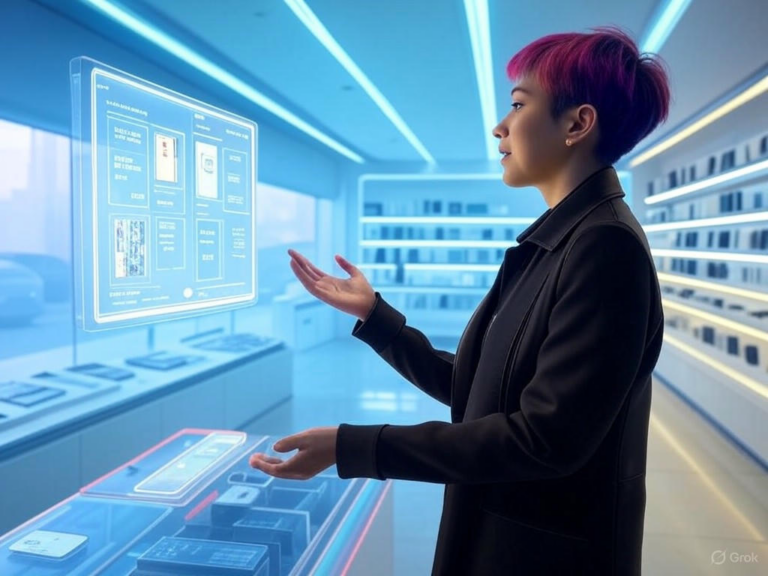
Generative AI Tools Transform California State Agencies
Revolutionizing Public Sector Services in California
Have you ever wondered how technology could make government services faster and more reliable? California is at the forefront, deploying generative AI tools to overhaul operations across state agencies. From streamlining traffic management to enhancing customer service, these innovative solutions are delivering real results for everyday Californians. As Governor Gavin Newsom emphasized in a recent announcement, it’s all about making government smarter and more responsive, not about reductions—think of it like giving public servants supercharged tools to tackle challenges head-on.[1][2][4]
Picture this: a busy highway cleared quicker because AI analyzed data in real-time, or a resident getting instant answers to tax questions without long waits. That’s the power of generative AI tools in action, helping agencies respond to public needs with unprecedented speed. This shift isn’t just tech for tech’s sake; it’s about building trust and efficiency in a state as vast and dynamic as California.
The Scope of California’s Generative AI Initiative
Launched through a 2023 executive order, California’s generative AI tools initiative stands out as a national leader in weaving advanced tech into government fabric. This program leverages the state’s innovative procurement process to test and scale ideas rapidly, turning bold concepts into everyday realities. It’s fascinating how this approach encourages collaboration between tech experts and public officials, fostering a culture of continuous improvement.
- California Department of Transportation: Here, generative AI tools dive into highway data to cut congestion and boost road safety, potentially saving lives through predictive analytics.
- Department of Tax and Fee Administration: These tools are transforming customer service by automating responses and personalizing interactions, making what was once tedious feel seamless.
- Statewide AI Analytics: Focused on preventing traffic fatalities, it strengthens public safety by spotting patterns humans might miss.
- Engaged California Platform: This empowers civic engagement, especially in areas hit by wildfires, where timely information can make all the difference.[1][4]
What if your local government used generative AI tools to anticipate community needs before issues arise? That’s exactly what’s happening here, creating a ripple effect of benefits across the state.
How Generative AI Tools Are Enhancing Public Safety
Safety is a top priority, and California’s use of generative AI tools is making significant strides. For instance, in traffic management, AI algorithms process vast amounts of data to predict accidents, allowing for proactive interventions like dynamic speed limits or alert systems. This isn’t just about numbers—it’s about real people getting home safely each night.
Consider a hypothetical scenario: A storm is brewing, and generative AI tools forecast increased risks on rural roads. Agencies can then deploy resources swiftly, perhaps even using AI-generated alerts to inform drivers. This level of foresight is changing how public safety operates, turning reactive measures into preventive strategies.
Benefits Realized Across Agencies
- Increased Staff Productivity: With features like instant image generation and automated reporting, employees are freeing up time for more creative work.
- Faster Response Times: AI chat tools handle constituent queries efficiently, reducing wait times and improving satisfaction.[2]
These generative AI tools are not only speeding things up but also reducing errors, which means agencies can focus on what matters most: serving the public.
Pioneering Tools and Programs in Action
At the heart of this transformation is the California Department of Technology’s generative AI tools like the State Digital Assistance AI Tool. Piloted in eight departments, it aids staff by creating visuals, summarizing complex data, and even drafting content—imagine turning hours of work into minutes. Then there’s Microsoft 365 Copilot Chat, offered at no cost, which helps with everything from analyzing information to automating routine tasks.
These tools aren’t replacing jobs; they’re enhancing them. For example, a government analyst might use generative AI tools to quickly generate reports on environmental impacts, allowing more time for in-depth reviews. It’s a game-changer for efficiency, especially in a state dealing with diverse challenges like climate change and population growth.
Real-World Applications and Success Stories
Let’s dive into a quick example: In customer service at the Department of Tax and Fee Administration, generative AI tools have cut response times by up to 50%, based on early pilots. This means residents get answers faster, which builds trust and encourages more engagement with services.
Ever thought about how AI could help in disaster response? In wildfire-prone areas, these tools analyze data to predict fire paths, helping agencies like Cal Fire coordinate evacuations more effectively. It’s innovative applications like this that showcase the broader potential of generative AI tools in government.
Challenges and Solutions for Implementing Generative AI Tools
Of course, integrating generative AI tools isn’t without hurdles. Privacy concerns and the need for accurate data are big ones, but California is addressing them head-on with strict guidelines and ethical frameworks. For instance, the state requires thorough testing to ensure these tools are unbiased and secure.
Here’s a tip for anyone in the public sector: Start small with pilots, just like California did, to build confidence and refine approaches. If you’re curious, check out resources from experts who advocate for responsible AI adoption.
What do you think—could generative AI tools work in your local government? By learning from California’s model, other states might overcome similar obstacles and reap the rewards.
The Future of Generative AI Tools in Government
Looking ahead, the potential for generative AI tools in California and beyond is exciting. We might see expanded uses in education, healthcare, and environmental monitoring, all aimed at creating a more resilient public sector. As technology evolves, so will its applications, potentially leading to smarter cities and more proactive governance.
Imagine a future where AI not only handles data but also collaborates with humans to solve complex problems. California’s initiative is paving the way, showing that with the right strategy, generative AI tools can truly transform how we experience government services.
Call to Action
If this has sparked your interest in how generative AI tools are reshaping public services, I’d love to hear your thoughts in the comments below. Share this article with others who might benefit, or explore more on our site about AI innovations in everyday life. Let’s keep the conversation going—your insights could inspire the next big change.
References
[1] California deploys new generative AI tools across state agencies. Statescoop. Link
[2] Governor Newsom deploys first-in-the-nation GenAI technologies. California Governor’s Office. Link
[4] California deploys generative AI in state government for efficiency. ABC10. Link
[5] California ready to buy generative AI. Statescoop. Link
Additional sources: AI Implementation and California State Government. Little Hoover Commission. Link
generative AI tools, California state government, AI tools, public sector innovation, government technology, AI in public services, California AI initiative, efficiency in government, public safety AI, civic engagement tools







